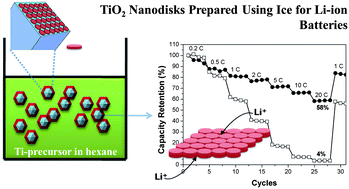TiO2 nanodisks designed for Li-ion batteries: a novel strategy for obtaining an ultrathin and high surface area anode material at the ice interface†
Abstract
A rapid and relatively large-scale production of ultrathin TiO2 nanodisks was achieved under mild conditions by developing a novel and simple sol–gel process occurring at the interface of an organic

- This article is part of the themed collection: 2020 EES Lectureship Winner: Wooyul Kim

 Please wait while we load your content...
Please wait while we load your content...